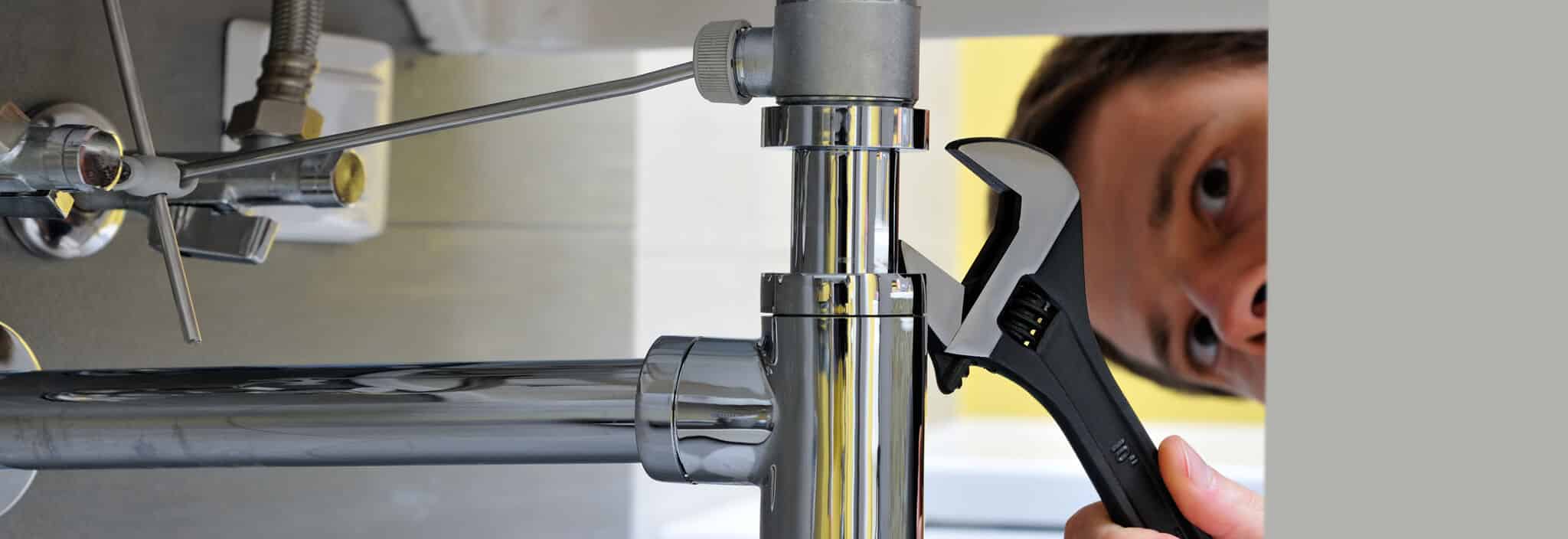General Questions about Plumbing and Drains
Don’t hesitate to call us for help diagnosing and fixing your problem. If you experience flooding, you should shut off the main water line leading to your home. Then, you can collect buckets and other empty storage containers for dripping water, and limit the spread of water with towels.
Dirty or worn seals inside faucets can lead to leaks. Depending on the condition of your current faucet, a simple replacement of worn parts could be the answer. However, a growing number of homeowners take this opportunity to replace their old faucets with stylish new ones.
Plumbing Costs, Estimates and Warranties
A plumbing system is complex, involving many different aspects. As such, no qualified plumber can promise to provide an estimate without first assessing the problem. By calling Reliance™, we’ll send a certified plumber to your house, who will assess the job and give you no-surprises quote for the job to be completed. Unlike many plumbers who estimate on time and materials, we tell you how much it will take to get the job done, no matter the time.
Absolutely! Along with your estimate and invoice, you’ll receive one-year parts and labour warranty coverage. Learn about our other money-back and service guarantees.
About Your Water Supply
The main water shut-off valve is commonly located by your home’s water meter in the basement, on the wall nearest your street.
Basement Flooding
Yes, frozen pipes will eventually thaw without help, but it can sometimes take weeks or even months for this to happen. Precisely how long depends on the situation.
A frozen pipe in a poorly insulated part of an exterior wall in a heated building might thaw by itself when outdoor temperatures rise yet it’s still winter outside. By contrast, a buried frozen water supply line or drain pipe could stay frozen until April or May depending on where you live in Canada. A big concern with frozen pipes is breakage. Pipes that freeze with water in them may split open.
When water mysteriously stops flowing from a fixture here or there in your home while it’s especially cold outside, a frozen pipe is the first thing to suspect. If water stops going down every drain in your house shortly after a cold spell, there’s a good chance your main drain is frozen.
When you turn on a tap that should be working and nothing comes out, test other fixtures to infer where the frozen blockage could be. It rarely happens that all pipes in a house freeze at the same time unless the main supply line is frozen. Discovering the location and extent of freezing is the vital starting point for getting things flowing again, before making changes to insulation to prevent freezing in the future.
Frozen water supply pipes could be a flood waiting to happen since cracked pipes are a common secondary problem caused by freezing. There are different ways to thaw frozen pipes depending on your situation, but all methods should start by shutting off the water to the affected pipes.
If you can see the pipes (perhaps inside a kitchen cabinet or in an open basement ceiling), then a household fan blowing heated room air onto the pipes can work quite quickly. Ultimately, applying heat to frozen pipes is the goal, and there are different ways to make this happen A hair dryer works too, and you can use a heat gun set on medium. Never use a hand-held torch or an open flame to thaw water pipes.
It’s a fire hazard and will damage plastic. Sometimes an expert will use an electric pipe thawing tool to defrost frozen metal pipes with an electric current. This works underground and when pipes are hidden within walls.
Thermostatically controlled electric heating cables are made for attaching to pipes and keeping them frost free when it’s not practical to warm them in other ways.
When water freezes it expands by approximately 9%, often strongly enough to burst even the most rigid pipes. Always remember that a damaged pipe probably won’t leak water while it’s still frozen, but it could leak lots of water later. Always look for longitudinal splits as you’re defrosting pipes, and never leave your home with frozen pipes and the water still turned on. This could lead to a huge flood if the pipes defrost and start leaking before you return.
Copper and hard plastic water supply pipes typically crack when they freeze full of water. PEX is another type of water supply pipe but it is less likely to crack when frozen because it’s slightly stretchy. You can identify PEX because it’s flexible and usually opaque white, blue or red. Regardless of the type of pipes you’re dealing with, don’t be surprised if a hot water supply line freezes.. If you can’t protect pipes from refreezing in the short term, leave freeze-prone fixtures running a small steady stream of water to keep things liquid. Water is less likely to freeze as long as it’s moving.
You can defrost frozen drain pipes with hot water or a hair dryer if you have access to the pipes. The most common place drains freeze is where water sits in the curved bottom portion of the drain trap. A consistently sloped drain pipe is less lilkely freeze because water never pools in the pipe. Low spots that retain water pose the highest likelihood of freezing.
The best way to prevent flooding from melting snow is to have good drainage and waterproofing in place in your home before the flooding occurs. A well drained home and building site is the best defence.
Besides asking the previous homeowner about floods, a little detective work will give you some answers. Dried water marks on walls and ceilings are a sure sign of previous flooding. It might not have been serious, but staining does show a weakness in the house somewhere.
Also, be sure to inspect the basement for signs of leaks and floods. Be especially tuned to seemingly small signs of previous leaks. A little bit of leaking can sometimes require thousands of dollars to repair.
Yes, a clogged gutter can cause basement flooding in some homes. If rain water and melting snow are not directed away from the house, water can seep into the basement. It doesn’t happen with all clogged gutters, but you still need to be aware of the danger. The farther you can direct water from your roof, the less likely that water is to ruin your basement.
It all depends on the extent of the flooding. Half-an-inch of water in your basement floor might not hurt your furnace, but 6 inches probably will; 12 inches of water will for sure. Don’t use your furnace until it has been inspected by a licensed technician as soon as possible after you dry your basement. This is the safest approach and definitely worthwhile.
The best way to remove water from your flooded basement depends on how deep the water is. If there’s anything more than an inch on the floor, you’ll need to start with some kind of pump. A sump pump or emergency transfer pump will work well. Direct the hose or pipe out a window and well away from the house.
After getting all you can with the pump, a wet/dry shop vac will help get the rest. Use a squeegee or broom to push the water towards the vac hose. Don’t wait too long to empty the vac because it’ll get quite heavy with water. Complete the drying process with fans, heaters and a dehumidifier to remove the last of the moisture as quickly as possible. The quicker you get the basement dry, the less likely mold is to grow.
The time to get ready when a flood threat appears is long before the threat even materializes. In addition to effective eavestroughs and soil grading that moves water away from your house, test your sump pump if you have one. If your basement relies on a sump pump to keep dry, then install a battery back-up sump pump that can keep working during a power failure. If your sump pump is not used regularly, ensure you test it or have it maintained regularly. If your sump pump is used regularly, consider adding a battery back-up sump pump if you don’t already have one installed. Also – and this is a big and often overlooked detail – have a device called a backwater valve installed in your house.
This is a one-way valve that allows sewage to leave your home normally through the main drain under your basement floor, but prevents sewage from backing up into your house in the event that the municipal sewage system becomes overloaded. Thousands of basements are ruined each year by sewage backing up into homes after heavy rains saturate municipal sewage systems. This damage is not covered under all insurance plans. A backwater valve is a good investment that prevents this kind of damage completely. Even if your basement is unfinished and not particularly vulnerable to flood damage, a backwater valve makes good sense.
Plumbing Fixtures
There are two reasons you might consider upgrading plumbing fixtures. You could be tired of how the old stuff looks, or your fixtures are starting to give you more trouble than you’re willing to fix.
Most good quality fixtures can be maintained and repaired for many decades, and leading brands even offer free lifetime replacement cartridges, washers and seals. If you don’t want to deal with drips and leaks and a plumber coming to your home regularly to keep older fixtures going, new fixtures are the way to go.
That depends. It’s sort of like asking how much a house costs. You can have a very economical bathroom tap installed for a couple of hundred dollars all-in, or you can pay $1000 for an imported, high-end faucet plus installation costs.
There’s no need to replace all fixtures at the same time since some get worn out more quickly than others. The faucet in a busy kitchen, for instance, will get worn faster than the tap in a guest bathroom. Sometimes, rather than doing a full bathroom renovation, homeowners will opt for a bathroom refresh by installing a new set of fixtures for the bath, shower and sink.








